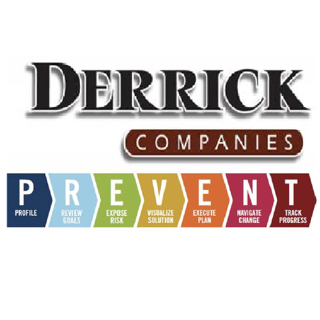Title Page
-
Audit Title
-
Client / Site
-
Conducted on
-
Prepared by
-
Location
-
Personnel
1. Review of all required applicable documents.
-
1.1 Has the daily Pre-task plan been filled out
-
1.2 Has the tool box talk for the week been documented
-
1.3 Hot work permit required?
-
1.4 Have all employees on site read and signed the Job Hazard Analysis, PSSP?
-
1.5 If required is there a site specific erection plan required for the project? If the answer is no reply with N/A.
-
1.6 Are SDS sheets available for review.
-
1.7 Is there a project specific binder available for review?
-
1.8 Are employee records such as certifications available for review?
-
1.9 Have equipment inspections been filled out for that day?
-
1.10 Is the equipment in good working order? If in need of repair call the mechanic.
2. Working at heights.
-
2.1 Is there proper and adequate fall protection available?
-
2.2 Has the fall protection equipment inspection been completed for the quarter?
-
2.3 Is there adequate leading edge protection on site?
-
2.4 Fall risks greater than 6'? Adequate controls are in place.
-
2.5 Fall protection equipment on site being used properly?
3. Electrical Power Tools (to include powder actuated tools)
-
3.1 Unsafe or damaged electrical power tools? (including missing or damaged guards, missing or damaged handles.)
-
3.2 Incorrect electrical power tool or attachment for task? ( example; using a grinding disc as a cutting disc) <br><br><br><br>
-
3.3 Is the tool in good working order.
-
3.4 When powder actuated tools are used, are operators trained?
-
3.5 Have the electrical tools been inspected for the quarter and have the correct color tape affixed on the cord?
-
3.6 Are GFCI's being used?
4. Scaffolds
-
4.1 Is there a competent person on site for frame or suspended scaffolding?
-
4.2 Are the employees trained and qualification verified?
-
4.3 Does the scaffold have a daily inspection tag on it and signed off by the competent person?
-
4.4 Is fall protection required while working on the scaffold ( suspended scaffold, scaffolding without handrails)?
-
4.5 When using a baker scaffold are the outriggers attached if more than one section high?
-
4.6 Is the capacity of the scaffold known?
5. Hoisting and Rigging equipment.
-
5.1 Are load weights known?
-
5.2 All hoisting equipment and rigging have capacities displayed and legible (SWL)?<br>
-
5.3 Are chain falls and come-a -longs in good working order, is the safety latch on the hook working properly?
-
5.4 Are tag lines being used properly?
-
5.5 Any unsafe or damaged equipment or rigging that needs to be removed from site?<br>If so has it been tagged out?
-
5.6 Has the path in which the material is to be hoisted been cleared of nonessential personnel and obstacles that can be removed?
6. Ladders
-
6.1 Ladders are in good working order and have been inspected?
-
6.2 Labels on the ladders are intact and legible?
-
6.3 Are ladders on stable ground?
-
6.4 Is the correct ladder being used for the task?
-
6.5 Are extension ladders set up properly and secured?
-
6.5 Step ladders are only used in the open position with the spreader arms locked?
7. Hazardous Chemicals (including fuel and oil)
-
7.1 Are flammable chemicals stored properly/ and away from ignition sources?
-
7.2 Is there a spill containment kit available in the event of a fuel or hydraulic spill.
-
7.3 Are chemicals being stored in proper containers?
8. Welding and Hot Work
-
8.1 Is a fire watch needed?
-
8.2 Inspected and charged fire extinguisher available within 25' of the hot work?
-
8.3 Has the area been cleared of all combustibles and flammables?
-
8.4 Is ventilation required during hot work operations (smoke eaters, fans)?
-
8.5 Engine drive welding machines are located in an area adequate to disperse carbon monoxide?
-
8.6 When electrode holders are not in use they are free of the electrode?
-
8.7 Welding leads are in good condition?
-
8.8 Welders are wearing adequate protection from sparks and welding rays?
9. Personal Protective Equipment.
-
9.1 Employees have adequate PPE.
-
9.2 Do employees know how to use and understand the limitations of the PPE?
-
9.3 Employees properly trained in PPE?
10 Emergency Response.
-
10.1 Is there someone onsite trained and has a current First Aid/ CPR qualification?
-
10.2 Properly stocked first aid kit is available?
-
10.3 In the event of an emergency, employees are aware of the muster point and procedure for a head count?
11. General Conditions.
-
11.1 Is there sufficient toilets and hand washing areas?
-
11.2 Is there adequate lighting?
-
11.3 Housekeeping is maintained?
-
11.4 Are noise levels under the TWA?
-
11.5 Access and egress paths are free and clear?
12. Mobile Equipment.
-
12.1 Mobile equipment has a documented inspection for the day?
-
12.2 Operator has the proper training and verifiable qualification?
-
12.3 Is the use of a spotter being utilized in tight areas or limited sight distance?
-
12.4 Capacities such as personnel or weight limit displayed on the machine?
13. Silica Controls.
-
13.1 Adequate equipment is available for minimizing silica exposure.
-
13.2 Workers understand what is required to work within table 1.
-
13.3 Is a site specific silica plan required for the project? If the answer is no use N/A.
-
Add location
-
Select date
-
Add media
-
Auditor Signature:
-
Site Supervisor Signature:








